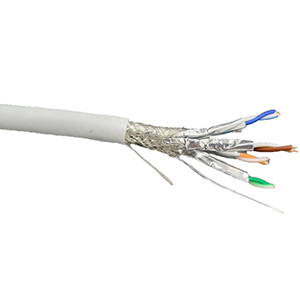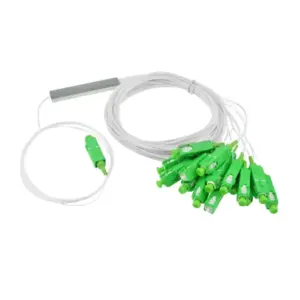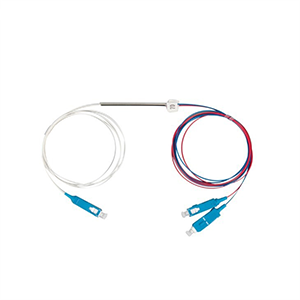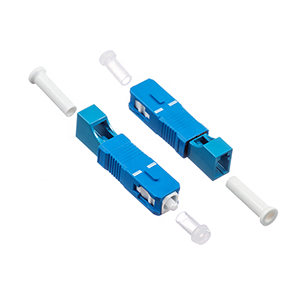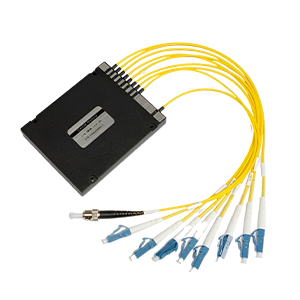Shielded Ethernet cables play a key role in improving network transmission quality. This article will focus on grounding shielded Ethernet cables and why it’s important. We will first define the basic concepts of shielded Ethernet cable, including its unique structural characteristics and how to enhance anti-interference capabilities. Next, we will delve into the role and technical requirements of shield grounding and explain the importance of grounding in shielded Ethernet cables.
We will introduce the two main grounding methods of single-ended grounding and double-ended grounding in detail, and compare their differences in implementation and effects. Next, we will help you choose the best grounding method and provide correct grounding procedures. Finally, we’ll analyze common grounding problems and their symptoms, and provide effective techniques for troubleshooting and resolving ground faults in shielded Ethernet cables.
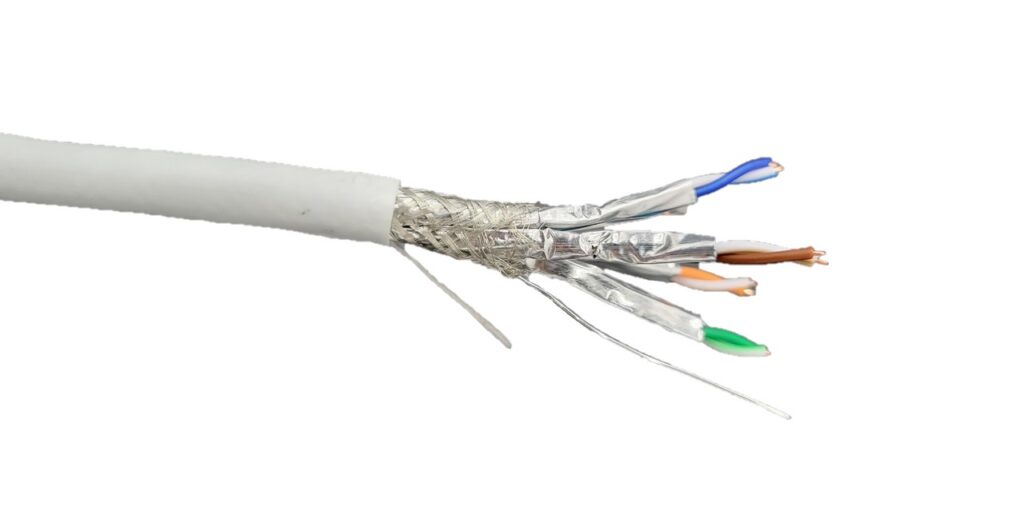
Basic concepts of shielded Ethernet cables
Let me introduce you to the basic concepts and working principles of shielded Ethernet cables in detail:
Structure and characteristics of shielded Ethernet cable:
- Shielded Ethernet cables add a metal shielding layer to standard Ethernet cables.
- This metal shielding layer can be a copper braided mesh, aluminum foil, etc., covering the outer layer of the signal wire pair.
- At the same time, an insulation layer will be added to the outer layer to form a complete shielding structure.
- Shielded Ethernet cables are generally more resistant to interference and noise.
How shielded Ethernet cables can enhance their anti-interference capabilities:
- The shielding layer can isolate electromagnetic interference (EMI) and electrostatic discharge (ESD) from the outside.
- When external electromagnetic interference signals act on the shielding layer, an induced current will be generated on the shielding layer.
- These induced currents will cancel each other out with interference signals, thereby weakening the impact of interference on internal signal lines.
- At the same time, the shielding layer can also reduce the leakage of internal signals to the external environment and reduce interference to other equipment.
Advantages of Shielded Ethernet Cables:
- Strong anti-electromagnetic interference and electrostatic discharge capabilities ensure the reliability of signal transmission.
- It can reduce signal line radiation and reduce the impact on electromagnetic compatibility of surrounding equipment.
- Widely used in industrial sites, medical equipment and other places with high EMC requirements.
- Significantly improved performance and security compared to standard Ethernet cables.
In short, shielded Ethernet cables effectively isolate electromagnetic interference from the outside by adding a metal shielding layer to the outer layer of the cable, greatly improving the anti-interference ability of network transmission. It is widely used in industrial control, medical equipment and other fields, and is an important guarantee for improving the stability of network systems.
Grounding principle of shielded Ethernet cable
Let me introduce to you in detail the role and key technical points of shielded Ethernet cable grounding:
The role of shielding layer grounding:
- The grounding of the shielding layer is the key to ensuring its anti-interference ability.
- Reliably ground the shielding layer with the equipment cabinet and the earth to form a low-impedance interference signal diversion path.
- This can effectively absorb and divert electromagnetic interference signals from the outside, protecting internal signal lines from interference.
- At the same time, it can also prevent damage to equipment caused by electrostatic discharge and improve the safety of the system.
Basic requirements for shielded Ethernet cable grounding:
- Ensure that the shielding layer is reliably connected to the equipment cabinet or ground terminal, and the resistance should be less than 1 ohm.
- The ground wire should be as short as possible to avoid interruption points such as joints and bends to reduce the ground loop impedance.
- Ground wires should not be routed in parallel with power lines and signal lines to reduce interference coupling.
- The grounding system should avoid ground loops and ensure that the potential of each grounding point is balanced.
Technical considerations for grounding shielded Ethernet cables:
- Choose an appropriate shielding structure and grounding method based on the electromagnetic interference intensity of the actual environment.
- For strong interference situations, a double-shielding or triple-shielding design can be used to enhance anti-interference performance.
- Properly plan the grounding system to avoid poor grounding or ground loop problems.
- Reliably ground the shielding layer with the equipment cabinet, the earth, etc. to form a low-impedance diversion path.
- Regularly check the grounding condition and perform timely maintenance to ensure the durability and reliability of the grounding.
In summary, the grounding of shielded Ethernet cables is the key to ensuring their anti-interference performance. Only by achieving reliable grounding of the shielding layer can the anti-interference ability and security of the network system be maximized.
Grounding method for shielded Ethernet cable
Let me walk you through the two main grounding methods for shielded Ethernet cables, and their respective advantages and disadvantages:
Single-ended grounding method:
- Ground the shielding layer only to a single grounding point at the signal source end (such as a switch, etc.).
- This method is simple and easy, and only requires a reliable ground connection at one end.
- It can effectively suppress electromagnetic interference from the signal source and improve signal transmission quality.
- But it cannot prevent ground loop currents caused by ground potential differences caused by different ground points.
Double-ended grounding method:
- Ground the shielding layer to the two grounding points of the signal source end and the signal receiving end at the same time.
- This method forms a complete shielding loop, which can absorb and conduct interference to the maximum extent.
- Helps eliminate ground potential differences caused by different ground points.
- But it is necessary to ensure that the resistance of the ground points at both ends is less than 1 ohm, otherwise ground loop current may occur.
Comparison of two grounding methods:
- Single-ended grounding is simpler and easier, but it cannot completely eliminate problems caused by ground potential differences.
- Double-ended grounding can suppress electromagnetic interference more effectively, but requires higher reliability of the grounding point.
- Usually in strong interference environments, double-ended grounding can provide better anti-interference performance.
- In situations where grounding conditions are poor, single-ended grounding may be a more practical option.
In summary, according to the electromagnetic interference environment and grounding conditions of actual application scenarios, it is very critical to choose an appropriate single-ended or double-ended grounding method. Only in this way can the anti-interference advantages of shielded Ethernet cables be maximized and ensure the safe and stable operation of the network system.
Best Practices for Grounding Shielded Ethernet Cables
Let me summarize for you the best practices when selecting and implementing shielded Ethernet cable grounding:
Decision factors to consider:
- Electromagnetic interference intensity and frequency range in the environment
- Equipment grounding conditions and reliability of grounding points
- The topology structure and device distribution of the network system
- Specific requirements for signal transmission quality and reliability
Selection of grounding method:
- In situations where the interference environment is weak and the grounding conditions are good, single-ended grounding can be used
- In situations with strong interference or poor grounding conditions, the double-ended grounding method should be given priority
- For special environments, you can also consider using multi-point grounding or grounding electrodes
Correct grounding procedures:
- Ensure that the shielding layer is reliably connected to the equipment cabinet or ground terminal, and the resistance is less than 1 ohm
- The ground wire should be as short as possible to avoid interruption points such as joints and bends to reduce the ground loop impedance
- Ground wires should not be routed in parallel with power lines and signal lines to reduce interference coupling
- Check whether there are ground loops or missing connections in the entire grounding system
- Regularly test the ground resistance value to ensure it meets the requirements
Other notes:
- Avoid confusing the shield with the neutral wire, they have different functions and voltages
- Check the ground connection for corrosion or poor contact
- Strengthen daily inspection and maintenance to ensure the long-lasting reliability of the grounding system
In short, the best practice for shielded Ethernet cable grounding requires comprehensive consideration of many factors, selecting a suitable grounding method and strictly implementing operating requirements. Only in this way can its anti-interference performance be maximized and reliable signal transmission guarantee be provided for the network system.
Troubleshooting shielded Ethernet cable grounding
Let me walk you through common tips for troubleshooting and resolving shielded Ethernet cable ground faults:
Common grounding problems and their symptoms:
- Poor grounding:
- Symptoms: Signal transmission interruption, frequent equipment failures
- Cause: Grounding resistance is too large, grounding point is corroded or loose
- Ground loop:
- Symptoms: Abnormal heating of equipment, current fluctuations, and ground potential differences
- Reason: Multiple grounding points are not at unified ground potential
- Ground leakage:
- Symptoms: Inadequate equipment protection, risk of electric shock to personnel
- Cause: The ground wire is disconnected or confused with the protective ground
Tips for troubleshooting and resolving ground faults:
- Measure the ground resistance value:
- Use a professional ground resistance tester to check the resistance value of each ground point.
- Make sure the resistance value is less than 1 ohm and meets the requirements.
- Check the status of the ground wire:
- Visually inspect the grounding wire for damage, corrosion, looseness, etc.
- Measure the resistance and continuity of each section of the ground wire.
- Eliminate ground loops:
- Check whether there are multiple ground points and test for ground potential differences.
- Take reasonable single grounding or equipotentialization measures.
- Improve the grounding system:
- Optimize ground wire routing to reduce joints and bends.
- Connect the shielding layer to a reliable grounding point such as the equipment cabinet.
- Regularly inspect and maintain grounding systems.
Troubleshooting and repair suggestions:
- Systematically analyze problem symptoms and find out the root cause of the failure.
- Use professional testing tools to comprehensively check the condition of the grounding system.
- Carry out system troubleshooting and repair according to standard operating procedures.
- Improve the design of the grounding system to ensure its reliability and durability.
- Strengthen daily inspections and preventive maintenance to prevent grounding problems.
In short, troubleshooting and solving shielded Ethernet cable ground faults requires a systematic approach and the support of professional tools. Only through careful fault diagnosis and targeted repairs can the reliability of the grounding system be ensured, thereby maximizing the anti-interference advantages of shielded cables.
Summary
Correct grounding of shielded Ethernet cables is key to ensuring network transmission quality. Our company focuses on providing high-quality shielded Ethernet cables and related solutions to help customers build excellent network infrastructure. Our shielded Ethernet cables have reached industry-leading levels in terms of anti-interference and transmission reliability.
Whether you need single-ended grounding or double-ended grounding, we can provide customized products and services based on your specific needs. At the same time, our professional technical team is ready to provide you with guidance and support to ensure that your shielded Ethernet cable can be installed correctly and operate stably in long-term.
Shielded Ethernet Cable FAQ
Proper grounding of the cable shield is crucial to effectively dissipate electromagnetic interference (EMI) and static electricity, ensuring signal integrity and safety.
The conductive shield of the Ethernet cable should be connected to a common ground point, typically the equipment chassis or a dedicated ground bus, to create a low-impedance path for unwanted electrical signals.
The shield should be grounded at both ends of the cable, at the equipment or network device connections, to create a complete ground path.
The shield is typically terminated and bonded to the equipment ground using a metal cable clamp, ground lug, or other appropriate grounding hardware.
Best practices include using a low-resistance ground connection, minimizing ground loops, and verifying the continuity of the ground path.
Grounding the shield at only one end is generally not recommended, as it can lead to ground loops and potential issues with electrical noise and interference.
Industry standards, such as TIA/EIA-568-C and IEC 61000-5-2, provide guidance on the proper grounding of shielded communication cables.
Improper grounding can result in increased EMI, signal degradation, ground loops, and potential safety hazards.
Testing can involve measuring the ground resistance, verifying continuity, and checking for any potential ground loops or differences in ground potential.
In these environments, additional precautions may be necessary to ensure proper and safe grounding, such as using explosion-proof equipment and following relevant safety regulations.

